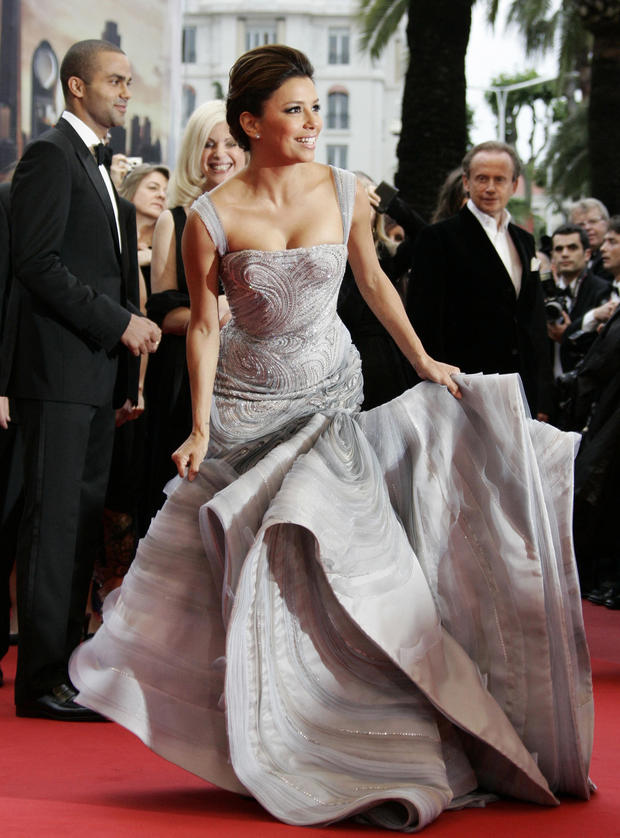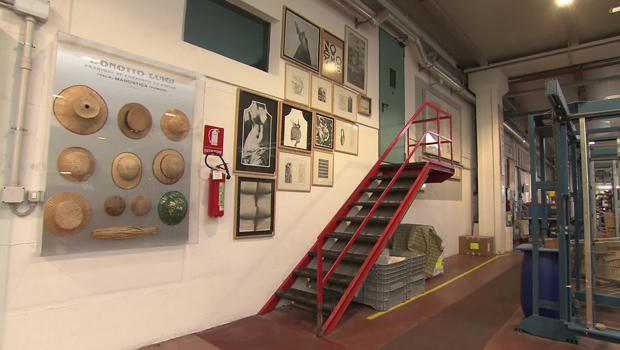Fashion victims: Italian artisans try to preserve their struggling industry
Creativity emanates from every corner of Italy, and this country’s $67 billion fashion business taps the talent of artisans who draw on generations of tradition.
But the coronavirus is sending shockwaves through the industry, shuttering shops and canceling fashion shows, with losses reaching a staggering $20 billion.
Correspondent Seth Doane traveled across Italy in recent months, to see how artisans are coping in the COVID era, from the floors of a fabric factory in the eastern Veneto region, to the rolling hills of Umbria.
CBS News
In the fashion capital, Milan, Raffaella Grasso inherited the embroidery business Pino Grasso Ricami from her father; snapshots of past successes are posted on the walls. Her clients include Dolce & Gabbana, Armani, and Bottega Veneta.
She explained the embroidery technique to Doane; “The technique that we use is overlapping sequins very well, and that makes the difference, and this is something you can do only by hand.”
An elaborate dress worn by Eva Longoria at the Cannes Film Festival took 1,000 hours to embroider, and mastering this craft can involve years of apprenticeship.
FRANCOIS MORI/AP
Doane met embroiderers who’ve been with the company for nearly three and four decades.
There is a wealth of collective knowledge – but this craft is in jeopardy. When “Sunday Morning” visited last summer, orders from fashion houses were down 70 percent.
“So, we are working half and half,” Grasso said – with people making half as much.
Since then, they’ve picked up some work, but are still down by 50%. They’d already worried about another wave of infections, which Italy is seeing now.
It’s a fight to keep the business going. “If we have to close, part of our knowledge and all of our experience will be lost forever,” Grasso said.
“So, thinking about having to close is not just about losing a business, it’s about losing more than that,” asked Doane.
“More than that, yes.”
In central Italy, the towns dotting the rolling hills of Umbria may appear remote, but the fashion businesses here are hardly insulated.
If stores don’t open in Los Angeles or New York or Tokyo, “We feel it,” said Adria Castellani, of the firm Luxury Cashmere, which makes high-end sweaters, scarfs and shirts for top fashion houses, including Ralph Lauren and Brunello Cucinelli.
CBS News
When Doane visited last year, they were filling orders that’d been placed last spring before Italy’s nine-week nationwide lockdown. But retail sales in their own shop were down close to 50 percent.
“The work itself is the same,” Castellani said, “but in past years we had more security.”
Lorenzo Bonotto runs his family company, Bonotto Fabrics, which produces for Chanel, Alexander Wang, Tory Burch, Theory, and hundreds of other clients.
“Fashion is always a business projected into the future,” he said, “because we need to think, to plan, what will go in the shops next year.”
CBS News
How did COVID affect business orders?
“At the beginning, was a big hit,” Bonotto said. But they’ve made up for those losses. Since they supply to companies in various countries, they’ve seen orders returning from places where lockdowns have loosened.
Doane asked, “You’ve seen the orders go up and down in different parts of the world, as the lockdowns have gone?”
“Working globally more or less we were able to compensate what was missing, the orders missing Europe arrive from Asia,” Bonotto said. “What now is missing from the United States is arriving from Europe now.”
This flexibility, he said, is an art, and he finds inspiration from the contemporary works they have on the walls. His dad started collecting decades ago, and today they have more than 17,000 pieces.
CBS News
“You don’t expect to look around a factory, a warehouse, and see forklifts driving past big pieces of art?” asked Doane.
“Yeah, yeah, yeah, you’re right!”
They thrive on creativity. It is central to imagining new fabrics and designs. “Only because we have the art around us to help be creative, and creative is the first vaccine against the COVID,” Bonotto said.
Creativity, he assured Doane, “is a mental vaccine.”
Finding opportunity is unusually challenging in this environment, but these artisans who’ve built businesses based on their talents are now drawing on that same creativity to survive.
For more info:
Story produced by Jon Carras and Anna Matranga. Editor: Lauren Barnello.





